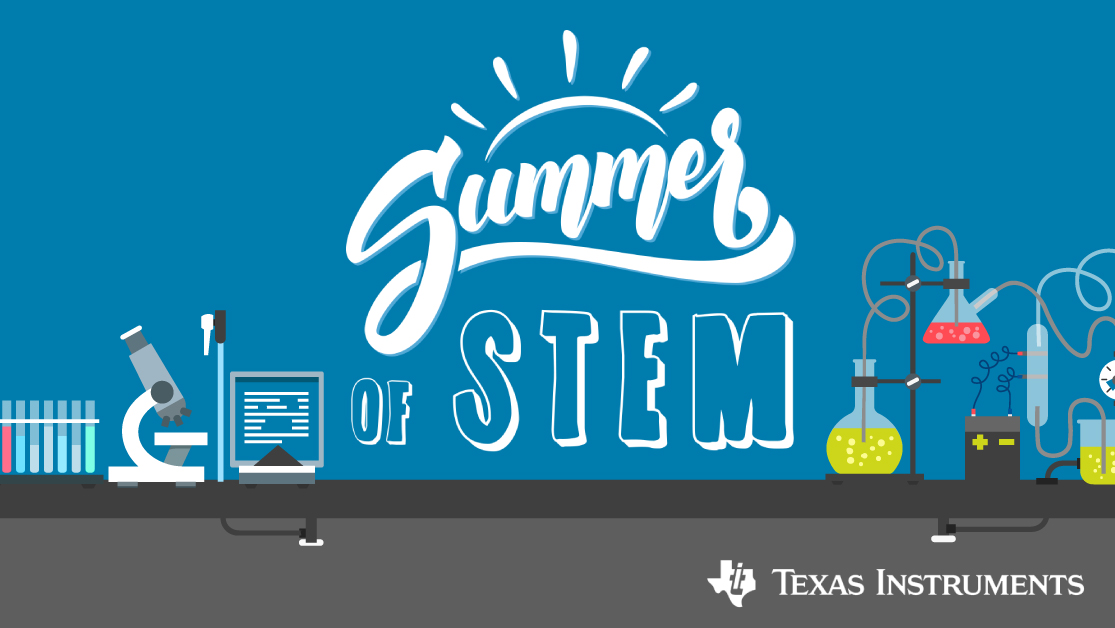Summer of STEM: Loop to Loop Cups
Posted 07/02/2018 by Erick Archer

Two cups that are base to base and connected with masking tape, and a launcher made up of smaller rubber bands connected together gives you the ingredients to have some gravity-defying fun! Oh, one more ingredient is needed … AIR!
What you’ll need:- Two cups of like size (cups that are commonly referred to as “styrofoam” work best)
- Masking tape
- 10 to 20 rubber bands
- Put the cups together, base to base, so that they have an hourglass shape.
- Wrap tape around cup bases to ensure they stay connected.
- Connect rubber bands together by folding one into another (see pictures below), and looping one rubber band through the loop of another. Repeat this pattern until you have 10 to 20 connected.
- Stretch your rubber band launcher around the bases of the cups while rolling the cups toward you until you have them about an arm’s-length away.
- Hold the cups near you while extending your other arm away from you, with the end of the rubber band either between your thumb and index finger or stretched across your index finger.
- Let go of the cups.
- Watch the cups float up. In many cases, you may notice the cups do a loop to loop.





How it works:
- The cups are wound by the rubber band which has a lot of potential energy.
- As the rubber band/cups are released, the rubber band moves quickly back to its unstretched form and transfers energy into the cups.
- The cups spin rapidly backward but are also propelled forward simultaneously.
- The backspin on the cups, combined with the forward motion of the cups, causes the surrounding air above the cups to move faster than the air below the cups. The difference in air velocity above the cups, as compared to below the cups, causes lift.
- If the cups were wound in such a way that the spin would be forward, known as “topspin,” you’d see the opposite effect … that is, the cups would move downward rapidly.
- Topspin, sidespin and backspin are used in nearly every sport that uses a ball. Tennis and baseball are prime examples.
Below, see a video of this experiment and others in action:
Tags:
Tagcloud
Archive
- 2025
- 2024
- 2023
- 2022
-
2021
- January (2)
- February (3)
- March (5)
-
April (7)
- Top Tips for Tackling the SAT® with the TI-84 Plus CE
- Monday Night Calculus With Steve Kokoska and Tom Dick
- Which TI Calculator for the SAT® and Why?
- Top Tips From a Math Teacher for Taking the Online AP® Exam
- Celebrate National Robotics Week With Supervised Teardowns
- How To Use the TI-84 Plus Family of Graphing Calculators To Succeed on the ACT®
- AP® Statistics: 6 Math Functions You Must Know for the TI-84 Plus
- May (1)
- June (3)
- July (2)
- August (5)
- September (2)
-
October (4)
- Transformation Graphing — the Families of Functions Modular Video Series to the Rescue!
- Top 3 Halloween-Themed Classroom Activities
- In Honor of National Chemistry Week, 5 “Organic” Ways to Incorporate TI Technology Into Chemistry Class
- 5 Spook-tacular Ways to Bring the Halloween “Spirits” Into Your Classroom
- November (4)
- December (1)
-
2020
- January (2)
- February (1)
- March (3)
- April (1)
- May (2)
- July (1)
- August (2)
- September (3)
-
October (7)
- Tips for Teachers in the time of COVID-19
- Top 10 Features of TI-84 Plus for Taking the ACT®
- TI Codes Contest Winners Revealed
- Best of Chemistry Activities for the Fall Semester
- Best of Biology Activities for the Fall Semester
- Best of Physics Activities for the Fall Semester
- Best of Middle Grades Science Activities
- November (1)
- December (2)
- 2019
-
2018
- January (1)
- February (5)
- March (4)
- April (5)
- May (4)
- June (4)
- July (4)
- August (4)
- September (5)
-
October (9)
- Art in Chemistry
- Which Texas Instruments (TI) Calculator for the ACT® and Why?
- Meet TI Teacher of the Month: Jessica Kohout
- Innovation in Biology
- Learning With Your Students
- A first-of-its-kind STEM strategy charts path to help educators
- #NCTMregionals Hartford 2018 Recap
- The Math Behind “Going Viral”
- Real-World Applications of Chemistry
-
November (8)
- Testing Tips: Using Calculators on Class Assessments
- Girls in STEM: A Personal Perspective
- 5 Teachers You Should Be Following on Instagram Right Now
- Meet TI Teacher of the Month: Katie England
- End-of-Marking Period Feedback Is a Two-Way Street
- #NCTMregionals Kansas City 2018 Recap
- Slope: It Shouldn’t Just Be a Formula
- Hit a high note exploring the math behind music
- December (5)
- 2017
- 2016
- 2015
